We talk a lot about change in schools. We discuss the positive and negative impacts of academisation, new approaches to the curriculum, harnessing technology to improve the quality of learning, the effects of COVID and failing to address a chronic teacher shortage. We talk about test and exam results.
Oddly, we do not talk very much about the pupils, despite huge recent changes in the composition of the school population. In 2016 just 14% of pupils were eligible for free school meals. The figure is now 24%. How did this huge rise happen?
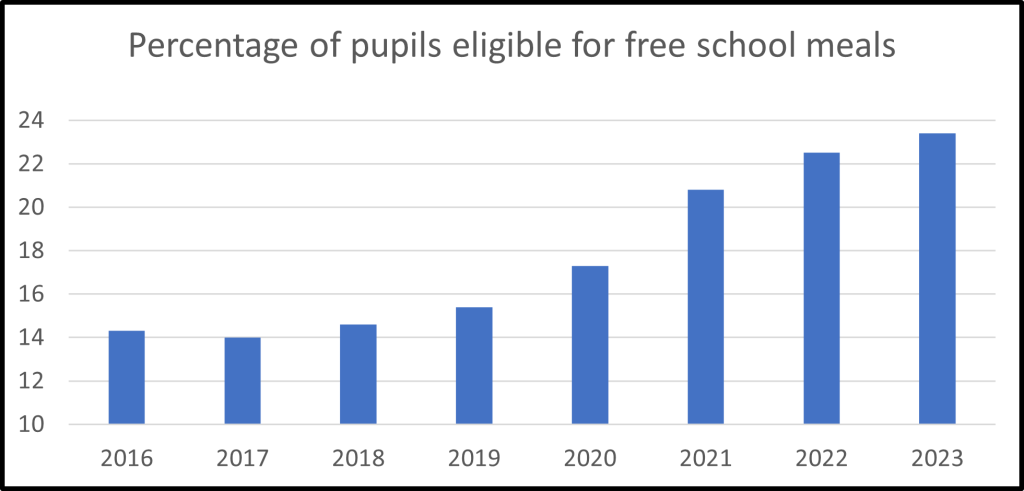
The UK’s Department for Education (DfE) released their latest statistics on ‘Schools, pupils and their characteristics’ for the 2022/23 academic year in June 2023. The annually updated school census data is for all schools in England and includes age, gender, free school meals (FSM) eligibility, English as an additional language, ethnicity, school characteristics and class sizes.
We have analysed this massive data set and pose some vital questions regarding the changing EAL pupil profile in English schools.
How has the ethnic make-up of English schools changed since 2016?
There is a substantial drop in the percentage of White British pupils with small decreases or increases for other groups. If change continues at this rate, the White British figure could be under 50% by 2037. There could be much conjecture about why and how these changes have happened, but we probably do not have enough reliable information to say much with certainty.
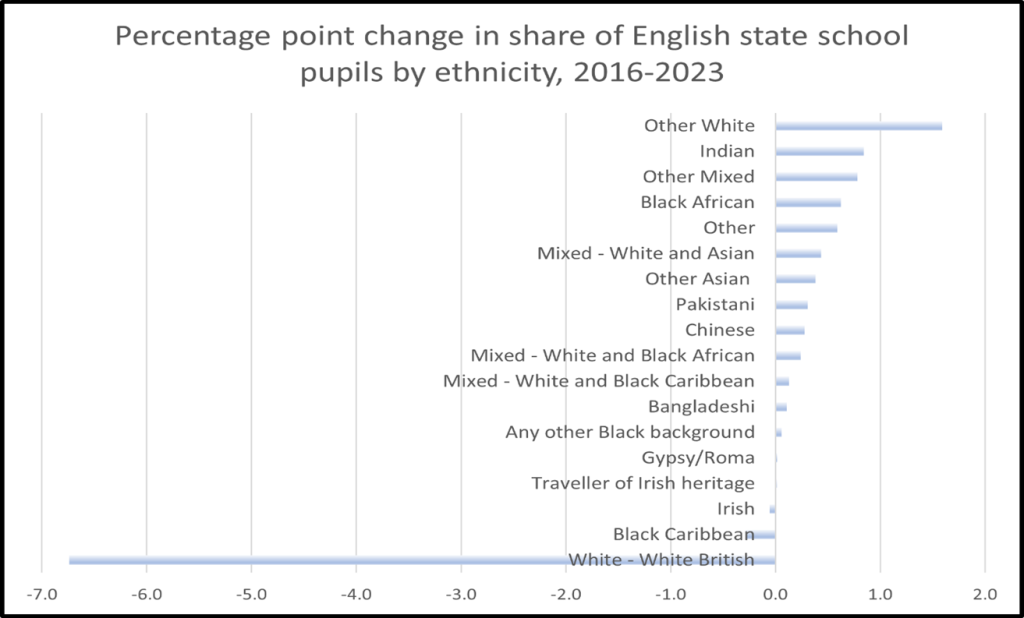
How many pupils have English as an additional language?
As a percentage of all pupils that figure has continued to rise every year. It is also very likely that the true figure is ten or more percentage points higher because the question parents are asked is often “What language do you speak at home?” rather than “What languages do you speak at home?”.
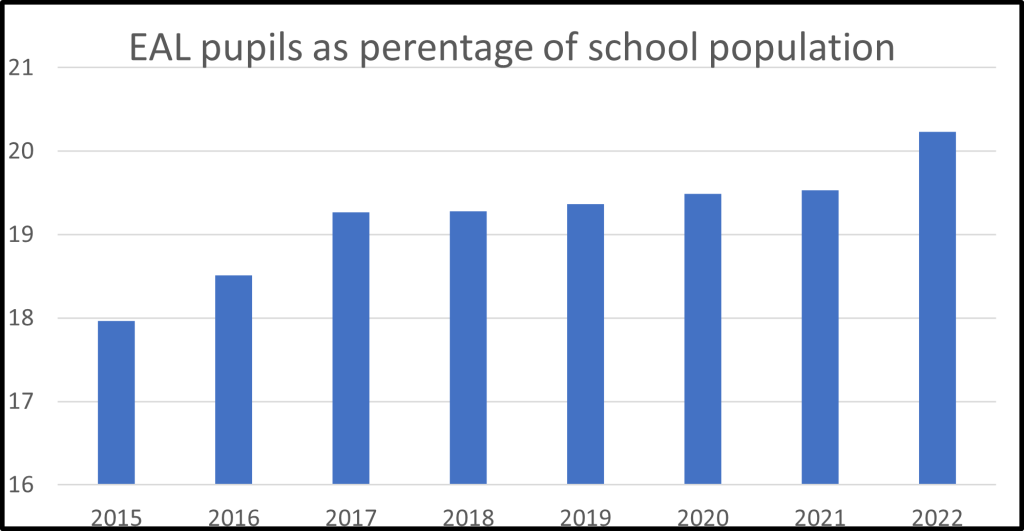
Which local authorities have seen the biggest change in their percentage of EAL pupils since 2016?
The biggest falls in the percentage of EAL pupils are mostly in Inner London, while the biggest increases are in Outer London and, other than Trafford, close to London. Is the cost of housing driving families out of Inner London?
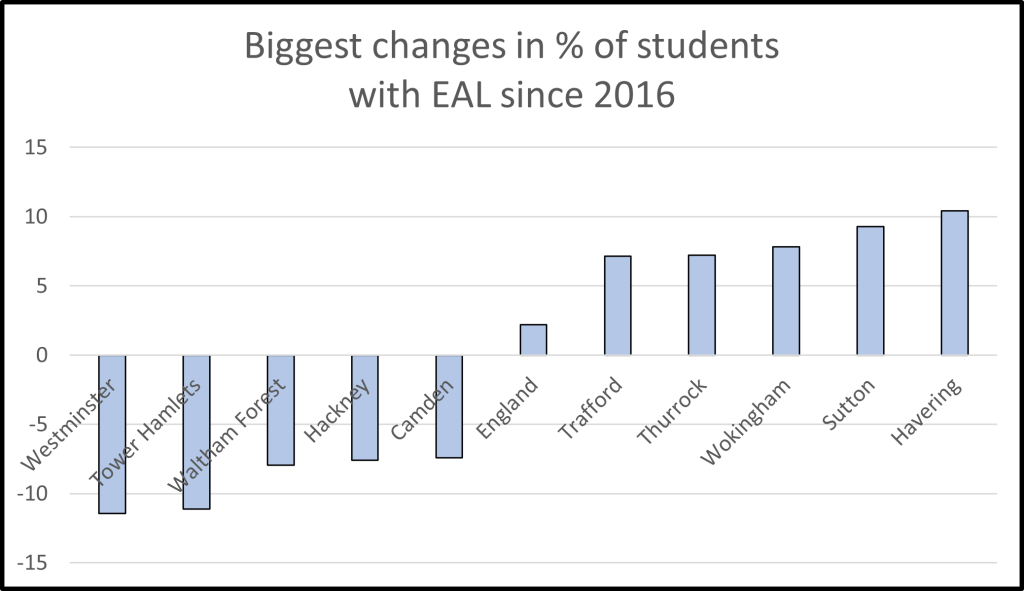
Which local authorities have the greatest and the smallest concentration of EAL pupils in 2023?
Outer London is now the location of three of the five highest concentrations of EAL pupils as figures have started to fall in much of Inner London. Three of the five local authorities with the lowest percentages of EAL pupils are in the North East.
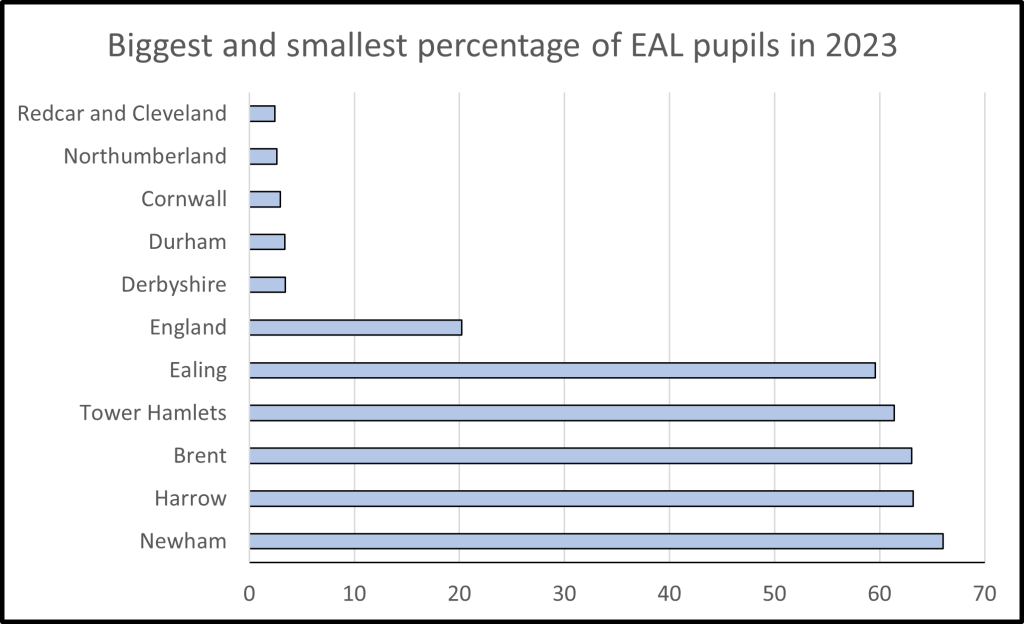
Which English regions have seen the biggest increase in the % of EAL pupils since 2016?
While London is the only region to have seen the negative movement in the percentage pupils, it has still had the largest increase in raw numbers. The biggest percentage point increases are in the East Midlands, the North West and the South East. What this data set does not tell us is to what extent these pupils are UK-born multilingual learners or new arrivals with limited English.
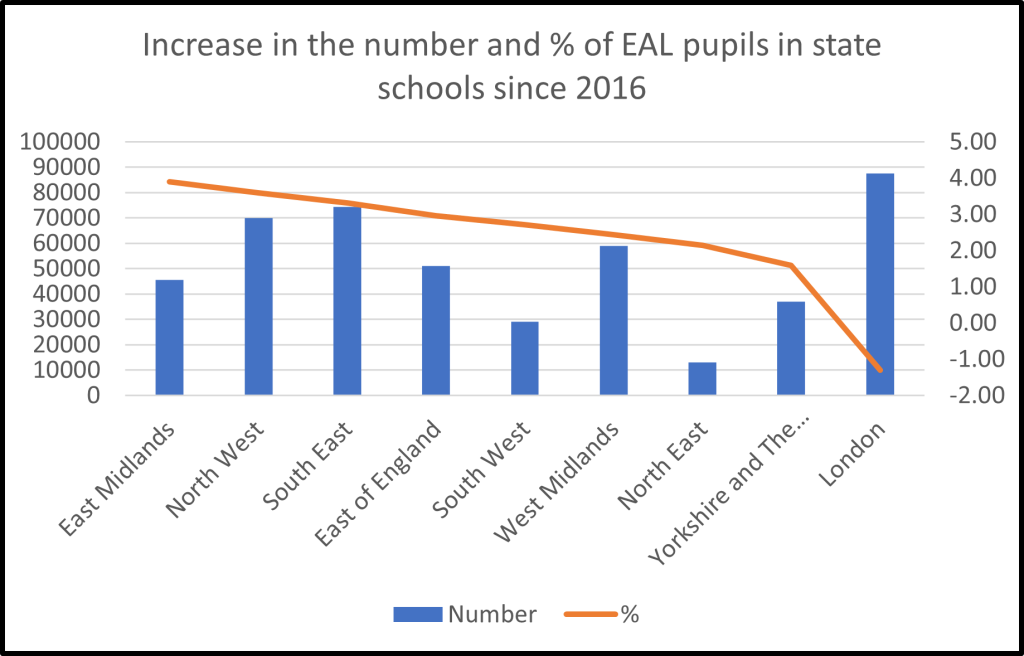
So what does this all this mean for you and your school?
Is the number of pupils with English as an additional language rising or falling in your area? You can find out by downloading this short summary of the percentage of EAL pupils in each Local Authority every year from 2016 until 2023.
When seeking out the specific data for your school, you will need to download the full data set from the DfE website. If you would like some support in identifying the new data for your school, please get in touch – contact@theealacademy.co.uk.
You might also like to read: Harnessing the power of EAL data

EAL data: finding it and using it
Online course
To bolster your data skills, consider this short online course. The course aims to develop data analysis and presentation skills in relation to EAL learners. It covers both what we can learn from school and wider data sources and how we can present that data to influence colleagues and improve EAL provision.
The EAL Quality Mark is based on a school’s self-evaluation of its EAL provision. It is an award made to schools on their achievements in meeting the needs of pupils learning English as an additional language.
It is available as a bronze, silver or gold award, allowing schools the opportunity to re-visit the award and build on their practice over time. Any school with pupils on roll who are learning English as an additional language is eligible to apply.
